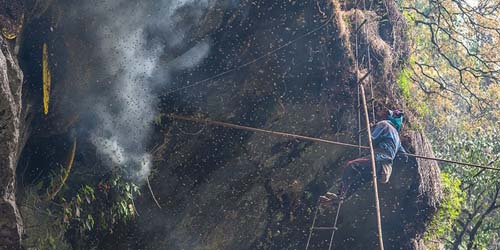
We are deep in the Himalayas. Between huge cliffs we make our way through the jungle. Then, through an opening in the dense trees, we see a magnificent view. Suddenly something comes down from the left rock. A pair of lianas, connected by some twigs, rolls down the mountain with a free fall until it stops at the last moment. It is a scrappy rope ladder. We have to look closely, but at the top of the mountain a young fellow descends the questionable ladder. On his bare feet. In his hand he carries a huge branch and on his head a hat with some gauze in front of it. Then we see what his goal is. The huge honeycomb of the giant honeybee. This is a local master beekeeper who is getting Mad Honey for you. Medicinal honey that makes you hallucinate.
Giant honey bee
The giant honey bee (Apis dorsata) is one of the largest honey-producing bees in the world. The three-inch-long bees make huge sculptures as nesting sites in the far east, which they prefer to hang high above the ground on branches and rocks. When the bees are disturbed, they become super aggressive. A raging swarm of giant bees can be too much for even a seasoned beekeeper, which can also cause you to become disoriented even when you're well protected and fall down the rope ladder. That makes the story of this honey worth telling. At the risk of their lives, this honey is extracted. But why, really? Well, the honey produced by the giant honeybee is not only a medicinal honey. It also makes you hallucinate. It’s called Mad Honey.
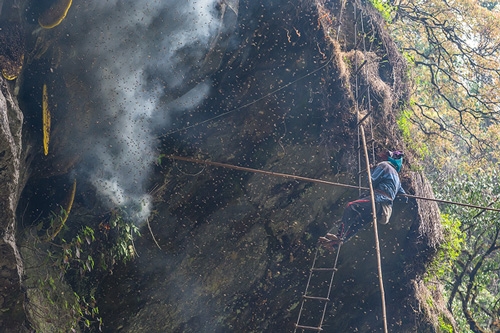
Hallucinating on Honey?
Hallucinations on a teaspoon of honey. It looks like a nice sales pitch from the smartshop, but there's something to it. You see, these bees like to snack on certain rhododendrons that grow near the cliffs. The bright pink flowers of these bushes contain grayanotoxins; toxins that in higher concentrations cause visual and auditory distortions. For that reason, this honey is better known as Mad Honey. Honey that drives you crazy. Well, temporarily.
Rhododendrons, by the way, are not the only plants from which bees make psychoactive honey. Belladonna, oleander, yew and grasses infected with claviceps (ergot) are some other examples of plants that can be a base for honey that will get you high.
"Hallucinations" on mad honey should be viewed in a broad sense. Don't expect people to crawl into the living room through your TV on mad honey. It’s not ayahuasca. Everything seems visually softer for a few hours and sound comes in crazy. Like having an empty kitchen roll on your ear and looking through colorful frosted glass. It's also not a magic mushroom trip (psilocybin), although a fly agaric trip comes pretty close.
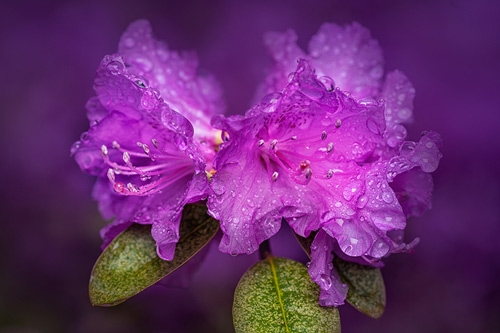
Medicinal Honey
Toxic substances? Doesn't this mean mad honey is dangerous? The grayanotoxins in honey act on the sodium ion channels and muscarinic receptors in our bodies. The toxic fly agaric also produces substances that have a similar effect. In moderate amounts, mad honey is not dangerous. In fact, the honey is taken by indigenous people for its supposed medicinal properties. Actually, traditionally mad honey is used as an aphrodisiac, for high blood pressure and for digestive problems. Locals take a teaspoon a year to keep the immune system working properly. However, higher doses are known to cause cardiac arrhythmia. Time to investigate the sweet spot.
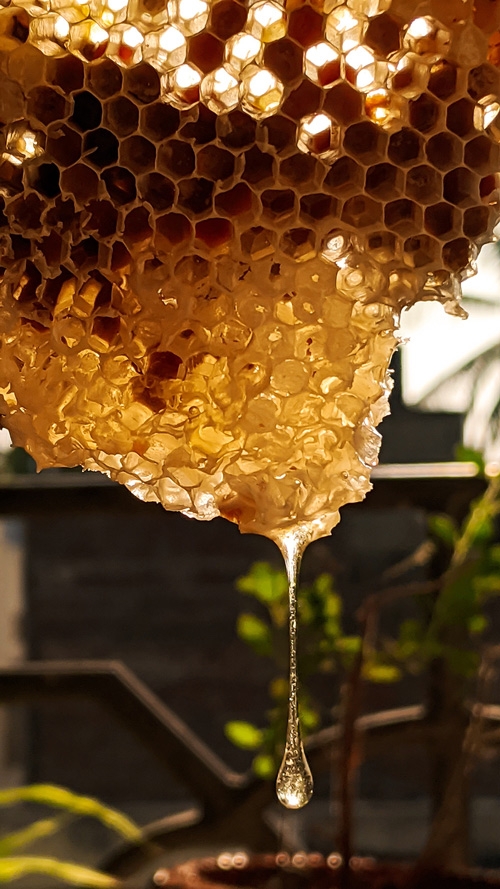
How much honey do you need to get high?
A teaspoon of mad honey is a common dosage. Then you feel relaxed, slow and a little excited. Two teaspoons is a more recreational dosage, where auditory and visual distortions occur. We recommend that you take no more than two teaspoons. Because you can get pretty sick if you take a lot of mad honey.
Warning: not suitable for people with heart problems!
What does Mad Honey feel like?
Tripping on mad honey is not exactly comparable to a LSD-trip or other psychedelics. In the famous VICE documentary that put mad honey on the map, the producer says it's a bit between being stoned and having a mushroom trip:
I feel pretty fucked up, but honestly it is a good feeling. It's a cold and warm feeling. It is kind of being stoned but it's kind of being on mushrooms as well. Like you eat just like a gram and a half or two grams of mushrooms.
Watch the whole documentary here:
Mad Honey Trip Report
If you take two teaspoons of this hallucinogenic drug, you will feel a warm and numbing effect in your body within the first thirty minutes after ingestion. You feel yourself slowly getting stoned and time seems to pass more slowly than you are used to. After 40 minutes, you strongly feel the need to lie down. The narcotic effect makes you feel tired, but at the same time it also creates very pleasant feelings that you feel in your whole body. It's a bit like opium and booze in one. Aches and pains disappear temporarily. After an hour and a half you may notice that you get more air because you can breathe freely. The effect can last for several hours and, if you surrender to it, you can go into an unconscious stupor. You bounce a bit between consciousness and unconsciousness. Almost like ketamine. Therefore it is definitely not a drug to take at a party. You should only do this if you are healthy and in an easy, pleasant place. Certainly not when you still have to drive.
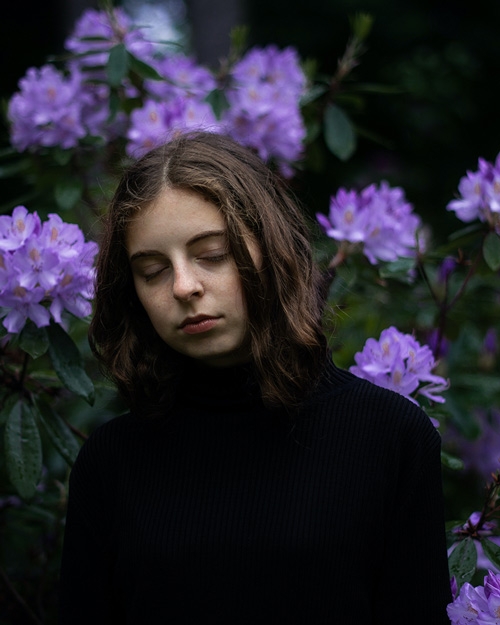
Buying Real Mad Honey
In our web store you can also buy mad honey. The brand Real Mad Honey imports different types of real honey. They even give you an analysis report of the composition, so you can be sure that there are indeed grayanotoxins in it and that you are not being scammed. The Nepalese honey jars contain the stronger variety. It is slightly darker than Turkish mad honey and also has a rather bitter aftertaste. We personally think the Turkish Real Mad Honey tastes better, but the Nepalese honey has the best story. The Turkish variety is harvested by local beekeepers in the Black Sea area in the northeast of Turkey. The Nepalese Mad Honey is harvested at an altitude of at least 3,500 meters in the Himalayas. Both types of honey are completely natural. Unfiltered, not processed and free of additives.